Overview of the Singapore Main Upgrading Programme (MUP)
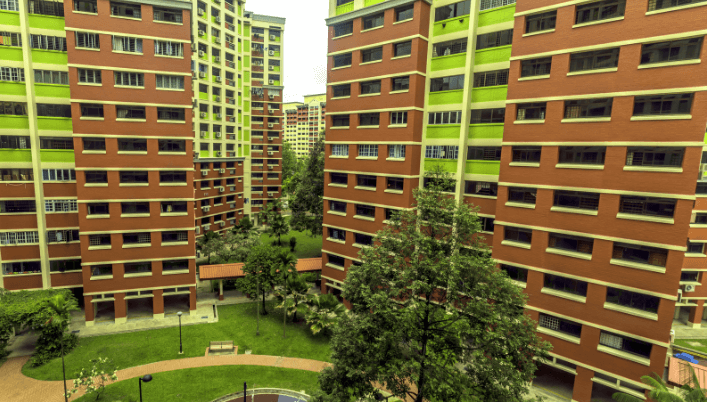
Define Main Upgrading Programme (MUP)
The Main Upgrading Programme (MUP) is a comprehensive program initiated by the Housing and Development Board (HDB) in Singapore.
It aims to enhance the living environment and amenities of public housing estates.
The MUP focuses on upgrading older housing blocks to meet the changing needs of Singaporeans and ensure that these estates remain vibrant and sustainable.
The MUP covers a wide range of improvements, including lift upgrading, common area refurbishment, and neighborhood renewal.
It addresses the challenges faced by aging public housing estates and seeks to provide a better living experience for residents.
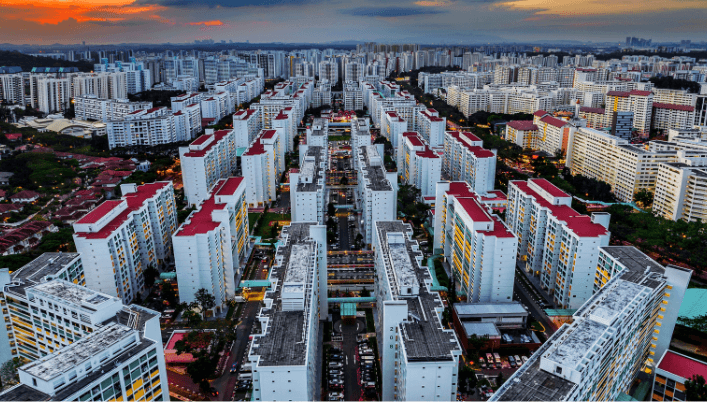
Significance of home improvement initiatives in public housing
Home improvement initiatives, such as the MUP, play a vital role in maintaining the quality and value of public housing in Singapore.
The HDB flats, managed by the Housing and Development Board, are a cornerstone of the country’s housing strategy.
The MUP and similar programs are part of the estate renewal strategy that ensures public housing remains attractive and functional.
These initiatives improve the living conditions, address issues like spalling concrete, and enhance the overall aesthetics of housing blocks.
By investing in these improvements, the HDB aims to create a conducive and sustainable living environment for residents.
Key Features of Main Upgrading Programme (MUP)
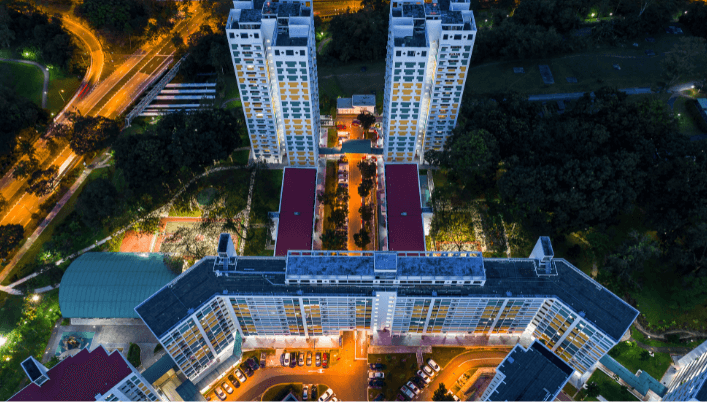
The Main Upgrading Programme (MUP) encompasses several key features to uplift the quality of public housing estates:
- Lift Upgrading: The MUP includes the installation of lifts in older housing blocks to improve accessibility, especially for the elderly and residents with mobility issues.
- Neighbourhood Renewal: As part of the MUP, select housing estates undergo comprehensive renewal, including improvements to existing facilities, landscaping, and infrastructure upgrades.
- Selective En Bloc Redevelopment Scheme (SERS): In certain cases, aging blocks within estates are identified for redevelopment under the SERS. This scheme aims to optimize land use and create new housing opportunities.
- Interim Upgrading Programme: The MUP also provides interim upgrading options for older estates that are not eligible for SERS. These upgrades enhance the living conditions for residents, ensuring their comfort and safety.
- Option Pricing: The MUP offers residents different upgrade packages with varying features and costs. This option pricing allows homeowners to choose the upgrades that suit their preferences and budget.
The Main Upgrading Programme (MUP) is a testament to Singapore’s commitment to providing quality public housing for its residents.
It provides a solid foundation for housing estate rejuvenation, meeting the needs of a diverse and aging population, and ensuring a sustainable future for Singapore’s public housing landscape.
Key Takeaways
- MUP Overview
- MUP is a comprehensive initiative by HDB in Singapore.
- Aims to upgrade older housing blocks for a sustainable living environment.
- Includes lift upgrading, common area refurbishment, and neighborhood renewal.
- HDB’s Role in MUP
- HDB crucial in planning and executing MUP projects.
- Identifies aging blocks, evaluates improvements, collaborates with stakeholders.
- Enhances functionality, aesthetics, and overall living conditions.
- Selective En Bloc Redevelopment Scheme (SERS)
- Aims to optimize land use and provide new housing opportunities.
- Redevelops aging blocks for improved living conditions and increased asset value.
- Residents given options for relocation or compensation.
- MUP Objectives
- Enhances living conditions through recreational spaces and accessibility.
- Addresses elderly residents’ needs with ramps, handrails, and barrier-free access.
- Improves common facilities for a secure and pleasant living environment.
- Preserving Asset Values
- Upgrading works maintain and enhance property values.
- Ensures long-term affordability and market competitiveness.
- Provides a sense of security and stability for homeowners.
- MUP and Ageing Population
- Addresses needs of older estates for the aging population.
- Focuses on elder-friendly features like improved lifts, drop-off porches, and outdoor spaces.
- Constant upgrading to meet evolving needs and ensure accessibility.
- Home Improvement Options
- MUP offers standard and customizable packages for residents.
- Up to 25% cash rebates to eligible residents for affordability.
- Neighbourhood Renewal Programme (NRP) and Lift Upgrading Programme (LUP) are integral components.
- Impactful MUP Projects
- MUP enhances communities through green spaces and recreational facilities.
- Block enhancements create cohesive neighborhoods.
- Strengthens community ties and promotes community ownership.
- Success Metrics of MUP
- Improved living conditions for upgraded flats.
- Positive impact on community ties and sense of belonging.
- Elder-friendly features contribute to an inclusive environment.
- Data integration and analytics, including tools like Google Analytics, used for assessment.
- Continuous Evolution of MUP
- MUP evolves to meet changing needs and expectations.
- Ongoing improvements for sustainable and comfortable living environments.
- Remains crucial for enhancing public housing estates and meeting resident expectations.
Understanding MUP and HDB
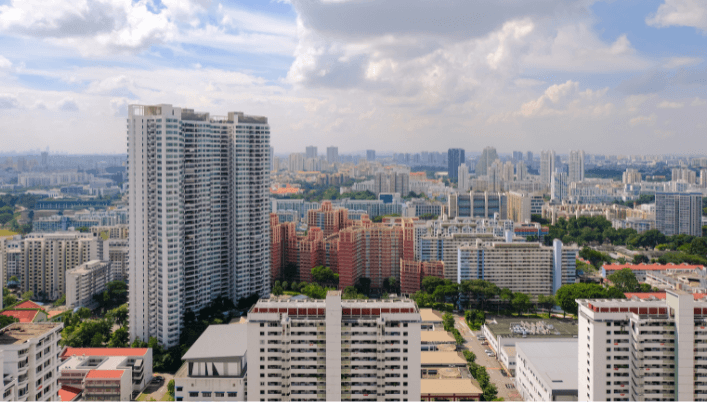
Understanding MUP and HDB
Role of the Housing Development Board (HDB) in the MUP
The Main Upgrading Programme (MUP) is an extensive initiative introduced by the Housing and Development Board (HDB) in Singapore.
As the main government body responsible for public housing, the HDB plays a crucial role in the planning and execution of the MUP.
The HDB oversees the development and implementation of upgrading projects in various housing precincts to enhance the overall living environment for residents.
Under the MUP, the HDB identifies aging housing blocks and evaluates the required improvements and upgrades.
This involves assessing the condition of facilities, infrastructure, and common areas in order to prioritize the enhancement projects.
The HDB collaborates with various stakeholders, including residents, town councils, and contractors, to ensure the successful completion of each upgrading project.
The MUP seeks to address the changing needs and preferences of residents by enhancing the functionality and aesthetics of public housing estates.
Upgrades may include improvements to lift accessibility, common area refurbishment, and neighborhood renewal.
The HDB aims to create vibrant and sustainable communities through these initiatives, promoting a higher quality of life for Singaporeans.
https://www.youtube.com/watch?v=HcAxL8d3Dlo
Selective En Bloc Redevelopment Scheme (SERS) as an enhancement to MUP
As an enhancement to the Main Upgrading Programme (MUP), the Housing and Development Board (HDB) introduced the Selective En Bloc Redevelopment Scheme (SERS).
SERS is a renewal program designed to optimize land use and provide new housing opportunities in selected blocks and precincts.
Under the SERS, aging blocks within public housing estates are identified for redevelopment.
This scheme aims to rejuvenate estates and enhance the overall living environment.
The HDB carefully evaluates factors such as the age, condition, and redevelopment potential of these blocks before initiating the SERS.
By redeveloping these blocks, the HDB can create newer and more efficient housing units to meet the needs of an evolving population.
The SERS not only improves the living conditions for residents but also increases the asset value of their homes.
Eligible residents are given the option to move to new replacement flats in the redeveloped precinct or receive compensation packages.
This ensures that residents have a choice in deciding their future housing arrangements.
The SERS is one of the pillars of estate rejuvenation and is a vital part of the HDB’s strategy for estate development and renewal.
By carefully selecting blocks for redevelopment, the HDB can create sustainable and vibrant public housing estates that cater to the needs of Singapore’s diverse and aging population.
The Main Upgrading Programme (MUP) and the Selective En Bloc Redevelopment Scheme (SERS) are essential initiatives introduced by the Housing and Development Board (HDB) in Singapore.
These programs play a crucial role in improving the quality of public housing and creating sustainable communities.
The HDB continues to work tirelessly to ensure that Singapore’s public housing estates meet the changing needs and expectations of residents.
Objectives of MUP
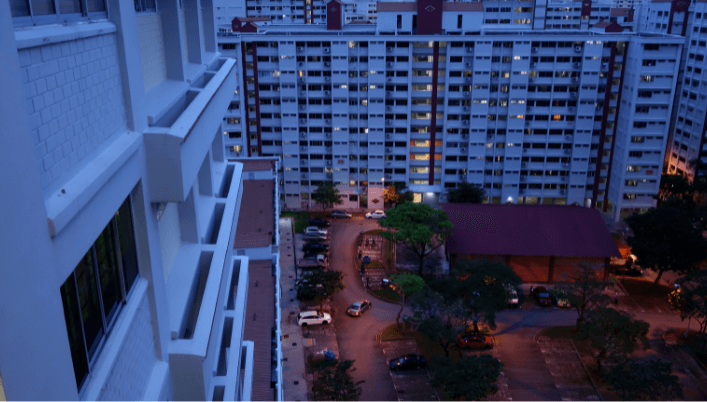
Enhancing living conditions and facilities for residents
The Main Upgrading Programme (MUP) in Singapore has been designed to enhance the living conditions and facilities for residents.
Through this programme, the Housing and Development Board (HDB) aims to improve the overall quality of life for flat owners by implementing various enhancements in their living environment.
One key objective of the MUP is to upgrade the recreational facilities in public housing estates.
This includes creating more green spaces, playgrounds, and community spaces where residents can gather and socialize.
By providing these recreational facilities, the MUP promotes a sense of community and encourages a healthy and active lifestyle among residents.
Additionally, the MUP focuses on meeting the needs of elderly residents.
The programme includes features such as ramps, handrails, and barrier-free access to ensure that elderly residents can move around easily and safely within their homes and the surrounding environment.
These enhancements aim to promote an age-friendly living environment and enable elderly residents to live comfortably in their own homes.
Furthermore, the MUP aims to improve the common facilities within public housing estates.
This includes upgrading lift systems, improving lighting and ventilation in common areas, and enhancing security features.
By enhancing these common facilities, the MUP creates a more pleasant and secure living environment for residents.
Overall, the MUP is a comprehensive programme that focuses on providing residents with enhanced facilities and amenities that contribute to their quality of life.
From recreational spaces to improved accessibility and better common facilities, the MUP aims to create a comfortable and enjoyable living environment for all residents.
Preserving and increasing asset values through upgrading
Another objective of the Main Upgrading Programme (MUP) is to preserve and increase the asset values of public housing.
As Singapore’s population ages, this becomes increasingly important, as homeowners look to maintain and enhance the value of their properties.
Through the MUP, the Housing and Development Board (HDB) implements various improvements within the flats to ensure that they remain attractive and competitive in the housing market.
Upgrading works may include changes to the layout, addition of modern amenities, and improvements to basic infrastructure.
These enhancements not only improve the quality of the homes but also increase their market value.
The MUP also supports the long-term affordability of the public housing market.
By continually upgrading and preserving the quality of public housing, the HDB ensures that the homes remain affordable for Singaporeans, even as the cost of living increases.
This is especially important considering the ageing population, as improvements within the flats and the surrounding amenities help to create a sustainable and comfortable living environment for residents.
The preservation and enhancement of asset values are crucial for homeowners, as it provides them with a sense of security and stability.
By investing in the MUP, homeowners can be confident that their properties will continue to appreciate in value over time.
This not only benefits the individual homeowners but also contributes to the overall stability and resilience of the housing market.
The Main Upgrading Programme (MUP) in Singapore has two key objectives: enhancing the living conditions and facilities for residents and preserving and increasing asset values through upgrading.
Through these objectives, the MUP aims to create a comfortable and enjoyable living environment while ensuring the long-term affordability and value of public housing for Singaporeans.
MUP and the Ageing Population

Addressing the needs of the ageing population through MUP
With Singapore’s population gradually aging, the Main Upgrading Programme (MUP) plays a vital role in addressing the needs of older estates and ensuring that they remain suitable for the ageing population.
As the Housing and Development Board (HDB) continues to upgrade public housing, it becomes essential to incorporate elder-friendly features and amenities.
Older HDB flats, particularly those that have been around for more than 20 years, often lack the necessary facilities to support the needs of elderly residents.
In response to this, the MUP focuses on improving lifts and lift lobbies to ensure better accessibility.
This includes features like ramps and wider doorways to accommodate mobility aids such as wheelchairs and walking frames.
Drop-off porches are also being enhanced to provide a convenient area for elderly residents to alight from vehicles.
These facilities make it easier for them to navigate their daily routines, encouraging independent living and reducing the risk of accidents.
Outdoor spaces within public housing estates are also being upgraded to cater to the needs of the ageing population.
These spaces provide opportunities for exercise, social interaction, and relaxation.
They play a crucial role in promoting community cohesion and strengthening ties among the elderly residents, who can engage in meaningful activities and build a supportive elderly community.
However, the successful implementation of elder-friendly features and facilities relies not only on the commitment from housing authorities but also on the active involvement of residents.
The continuous development and upgrading of these features depend on candid feedback and suggestions from elderly residents.
By actively engaging with the community, the MUP ensures that developments are made with the specific needs of the ageing population in mind.
Furthermore, the MUP has committed itself to constant upgrading to meet the evolving needs of elderly residents.
As the ageing population continues to grow, there is a need for ongoing improvements to support their changing requirements.
This commitment to constant upgrading ensures that public housing remains accessible, safe, and comfortable for everyone.
Implementing elder-friendly features and facilities
The Main Upgrading Programme (MUP) recognizes the importance of implementing elder-friendly features and facilities in public housing estates.
With the population of Singapore reaching an older demographic, it becomes crucial to create environments that cater to the needs of elderly residents.
One aspect of the MUP’s efforts is to upgrade lifts and lift lobbies in older estates.
This ensures smooth and reliable vertical transportation for elderly residents, allowing them to access their homes more comfortably.
Lifts are equipped with features such as handrails and non-slip flooring to enhance safety and facilitate independent mobility.
Drop-off porches are another essential feature being enhanced under the MUP.
These areas provide convenient spaces for elderly residents to enter and exit vehicles without encountering obstacles.
By upgrading drop-off porches, the MUP aims to improve accessibility and reduce any potential inconvenience faced by elderly residents.
Outdoor spaces within public housing estates are also receiving special attention.
The MUP focuses on creating more recreational spaces and seating areas, allowing elderly residents to engage in physical activities, relax, and socialize.
These spaces not only promote a healthy and active lifestyle but also enhance community cohesion and encourage interaction among elderly residents.
The commitment to implementing elder-friendly features and facilities goes beyond initial upgrades.
The MUP recognizes the importance of ongoing maintenance and improvements to ensure that these amenities remain functional and suitable for the aging population.
Regular checks, repairs, and upgrades contribute to the comfort and well-being of elderly residents, creating an environment that supports their needs.
The MUP acknowledges the needs of the ageing population and actively implements elder-friendly features and facilities in public housing estates.
By addressing accessibility concerns, providing suitable drop-off areas, and creating outdoor spaces for socialization, the MUP ensures that elderly residents can live comfortably and enjoy an enhanced quality of life.
Constant upgrading and maintenance further underscore the commitment to meet the evolving needs of the aging population.
Home Improvement Programme | Enhancement
The cost of upgrading HDB flats is a significant concern for homeowners.
Unlike the mup, which receives strong support from the government, many flat owners have to bear the expenses of upgrading their own units.
This puts a financial strain on families, especially those with limited resources.
Furthermore, the type of flat also impacts the cost of upgrading.
For example, a larger and more spacious flat may require more extensive works, leading to higher expenses.
Moreover, every floor in the building needs to undergo upgrading works, further adding to the overall cost.
Over the years, the MUP entered a steady-state phase, with the government providing extensive support to enhance the living conditions of HDB residents.
The concept of upgrading HDB flats revolves around improving the infrastructure and amenities within the estates.
By modernizing and revitalizing these living spaces, the government aims to create better living environments for the residents, ensuring their well-being and comfort.
However, the financial implications for homeowners remain a significant aspect to be addressed, as the cost of upgrading can serve as a barrier for some families to improve their living conditions.
https://www.youtube.com/watch?v=kmxhP_8GLkA
National development in Singapore has been a meticulous and strategic process.
One of the key aspects of this development has been the construction of flats by the Housing and Development Board (HDB).
Since its inception, the HDB has built numerous flats to cater to the growing population and housing needs of citizens.
However, as the country progresses, the HDB has also introduced various programmes to ensure that older flats remain well-maintained and livable.
One such programme is the share of the upgrading cost scheme.
Under this scheme, residents of older flats are required to contribute a portion of the cost for upgrading and maintenance works.
This initiative not only ensures the longevity of the flats but also encourages a sense of ownership and responsibility among residents.
Common maintenance problems such as leaky pipes, faulty electrical systems, and aging infrastructure are addressed through this programme.
Additionally, the government has provided support and resources to aid residents in meeting the financial commitments of the scheme.
Through these efforts, the HDB has successfully maintained the quality of flats, ensuring that they continue to provide comfortable and affordable housing options for Singaporeans.
Overview of the Various Upgrading Options Available
The Main Upgrading Programme (MUP) offers a range of upgrading options to enhance the living environment of public housing estates in Singapore.
These options address different needs and budgets, ensuring that residents have access to affordable home improvement solutions.
The MUP provides a standard package that covers essential improvement items such as lift upgrading, electrical supply enhancements, and the installation of estate-wide essential amenities.
This standard package is designed to benefit all residents and is offered at a subsidized cost to ensure affordability.
In addition to the standard package, residents can also choose from various upgrading packages that offer additional improvement items to meet specific needs.
These packages allow residents to fine-tune the programme according to their preferences and requirements.
To further ensure affordability, the MUP offers up to 25% cash rebates to eligible residents.
This financial assistance makes the upgrading options even more accessible and helps residents manage the costs associated with home improvements.
The Neighbourhood Renewal Programme (NRP) is a government initiative aimed at enhancing the living environment in older public housing estates.
This programme targets areas that require improvement in terms of infrastructure, facilities, and overall aesthetics.
With an emphasis on community involvement and feedback, the NRP seeks to create vibrant and inclusive neighbourhoods.
Another important initiative, the Lift Upgrading Programme (LUP), focuses on upgrading existing lifts in older HDB blocks, making them more convenient and accessible for residents.
This programme has significantly improved the vertical mobility options within these estates.
One such beneficiary of the LUP is the Ang Mo Kio estate, where the demonstration phase has been successful in showcasing the benefits of this programme.
The total cost of these initiatives is substantial, but the long-term improvements they bring are invaluable.
Both the NRP and LUP aim to uplift the quality of life for residents and make their living environment more pleasant and functional.
Upgrading toilets is an essential aspect of improving sanitation infrastructure.
As outdated toilet systems can lead to unhygienic conditions and water wastage, upgrading them is necessary for ensuring public health and environmental sustainability.
By investing in modern toilet fixtures and technologies, such as dual-flush toilets and water-saving mechanisms, we can significantly reduce water consumption and contribute to water conservation efforts.
Moreover, upgrading of toilets offer better hygiene standards, reducing the risk of diseases and improving overall public health outcomes for at least 75 percent.
Therefore, making the necessary investment to upgrade toilets is a crucial step towards creating a healthier and more sustainable future.
Examples of MUP Projects and Their Impact on Communities
The MUP has been implemented in various neighborhoods across the island, transforming public housing estates and improving the quality of life for residents.
These projects have had a significant impact on the communities they serve.
One important focus of MUP projects is the creation of spaces for greenery and recreational facilities within public housing estates.
These enhancements provide residents with opportunities for exercise, relaxation, and social interaction.
The presence of well-maintained outdoor spaces strengthens community ties, promotes community bonding, and encourages a sense of community ownership.
MUP projects also often involve the upgrading of a cluster of blocks, creating a cohesive community within the neighborhood.
These block enhancements include improvements such as barrier-free accessibility, covered walkways, and communal spaces for residents to gather and bond.
These measures foster a sense of belonging and create a conducive environment for residents to interact and build relationships with their neighbors.
The Main Upgrading Programme (MUP) offers a range of upgrading options to improve public housing estates in Singapore.
The programme provides affordable solutions for residents to enhance their homes and creates spaces for greenery and recreational facilities, fostering cohesive communities and promoting community ownership.
MUP projects have proven to have a positive impact on neighborhoods, strengthening community ties and enhancing the overall living environment.
Assessing the Success of MUP

Measuring the effectiveness and impact of MUP initiatives
The Main Upgrading Programme (MUP) in Singapore has been instrumental in enhancing public housing estates and improving the quality of life for residents.
To assess the success of MUP initiatives, various factors need to be considered, including the effectiveness and impact of the improvements made.
One significant measure of success is the improvement in the living conditions of flats that underwent upgrading.
The MUP targets blocks that are more than 20 years old, addressing maintenance issues, and enhancing essential amenities.
By revitalizing these aging flats, the MUP ensures that residents can continue to live comfortably in their homes.
Another key aspect to consider is the impact on the community.
The MUP focuses on creating cohesive neighborhoods by enhancing communal spaces and promoting community interaction.
These improvements foster a sense of belonging and encourage residents to build relationships with their neighbors.
In turn, this strengthens community ties and promotes a sense of community ownership.
The MUP also recognizes the needs of the aging population.
With Singapore’s population aging rapidly, it is crucial to provide facilities and amenities that cater to the elderly.
The MUP includes measures such as barrier-free accessibility and covered walkways, making it easier for elderly residents to navigate their neighborhoods.
These enhancements contribute to a more inclusive and age-friendly environment.
To assess the success of MUP initiatives, the allocation of flats within upgraded blocks is another important factor.
The Development Board carefully considers the needs and preferences of residents during the allocation process.
By ensuring that residents are satisfied with their upgraded homes, the MUP demonstrates its effectiveness in meeting the expectations of the community.
Additionally, data integration and analytics play a vital role in assessing the success of MUP.
The use of tools like Google Analytics helps track the usage and impact of upgraded facilities.
This data provides valuable insights into the effectiveness of specific improvements and helps guide future decision-making.
Assessing the success of MUP initiatives involves evaluating the effectiveness and impact of the improvements made to public housing estates.
By considering factors such as improvements in living conditions, community growth, allocation of flats, and data integration, it becomes possible to gauge the overall success of the Main Upgrading Programme.
The MUP continues to play a crucial role in enhancing the living environment and meeting the evolving needs of Singapore’s residents.
Conclusion
After exploring Singapore’s Main Upgrading Programme (MUP) and its significance in improving housing and living conditions, several key takeaways can be summarized.
Summary of key takeaways from the MUP discussion
The MUP is a comprehensive program aimed at upgrading older housing estates in Singapore.
It focuses on improving common areas, lifts, and other facilities to enhance residents’ quality of life.
The program covers a wide range of estates, including Marine Parade, Toa Payoh, Kim Keat, Lorong Lew Lian, and Telok Blangah.
One of the key objectives of the MUP is to address the aging infrastructure in these estates.
By upgrading lifts and common areas, residents can enjoy safer and more comfortable living conditions.
The program also aims to create a sense of community by providing comprehensive facilities and amenities that cater to residents’ needs.
The demand for improvement works under the MUP is driven by various factors, including the commitment and willingness of residents to participate in the upgrading process.
The success of the program relies heavily on the cooperation of residents in fulfilling their financial obligations and adhering to the guidelines set by the government.
Looking ahead, the MUP has future plans to continue upgrading aged blocks and building new replacement flats.
These efforts aim to ensure that residents have access to basic homes with fresh 99-year leases and comprehensive facilities.
The government is committed to providing comfortable and affordable housing options to all Singaporeans.
Overview of the demand for improvement works and future plans
The demand for improvement works under the MUP is driven by the need to enhance the living conditions in older housing estates.
Residents recognize the importance of maintaining and upgrading their homes to ensure a comfortable and safe environment.
The MUP offers various optional improvements to cater to different needs and preferences.
Residents can choose from a range of enhancement options, including upgrading lifts, improving common areas, or adding new facilities.
The government provides financial aid packages and subsidies to support residents in their improvement efforts.
In the future, the MUP aims to continue its efforts in upgrading aged blocks and building new replacement flat type.
The government recognizes the importance of providing modern and sustainable housing options for Singaporeans.
By investing in the construction of new flat build with fresh 99-year leases, residents can look forward to comfortable and long-term housing solutions.
The success of the MUP relies on collaboration between residents, the government, and other stakeholders.
It requires the commitment and active participation of residents in fulfilling their financial obligations and supporting the upgrading efforts.
By working together, Singapore can continue to improve its housing estates and create vibrant communities for its residents.
In conclusion, the Main Upgrading Programme plays a crucial role in enhancing the living conditions and infrastructure of older housing estates in Singapore.
Through comprehensive upgrades and enhancements, residents can enjoy comfortable and modern homes with a range of facilities.
The program’s success depends on the commitment and cooperation of residents, the government’s support, and partnerships with various stakeholders.
Moving forward, Singapore will continue its efforts in upgrading aged blocks and building new replacements depending on the flat type, to meet the evolving needs of its residents.
Frequently Asked Questions
What is a lock-in period?
A lock-in period refers to a specific period of time during which certain restrictions are imposed on a financial product or transaction. It typically applies to loan agreements or investment offerings, and it restricts the ability to make changes or withdraw funds before the predetermined period expires.
How long is the lock-in period for a home loan?
The lock-in period for a home loan can vary depending on the lender and the specific terms of the loan agreement. It is commonly set for a period of 3 to 5 years, during which borrowers are obliged to maintain the loan before being allowed to make any changes or pay off the loan in full without penalties.
What happens if I want to sell my property during the lock-in period for a housing loan?
If you wish to sell your property during the lock-in period for a housing loan, you may be subject to penalty fees. These fees are designed to compensate the lender for the early repayment of the loan. It is advisable to carefully review the terms and conditions of your loan agreement to understand the implications of selling the property before the lock-in period expires.
Can I refinance my loan during the lock-in period?
Refinancing a loan during the lock-in period can be challenging as it is likely to incur a penalty fee. Lenders impose this fee to discourage borrowers from refinancing before the agreed-upon period has elapsed. It is advisable to consult with your lender and carefully consider the potential costs and benefits before deciding to refinance your loan during the lock-in period.
What is a promotional interest rate lock-in period?
A promotional interest rate lock-in period is a specific period of time during which a borrower can enjoy a reduced interest rate on their loan. This lower rate is offered as an incentive or promotion by the lender. However, during this lock-in period, borrowers are typically required to fulfill certain conditions, such as maintaining a minimum loan balance or not making early repayments, to retain the promotional interest rate.
Is a lock-in period always a bad thing?
Lock-in periods are not necessarily negative. They can offer advantages such as lower interest rates or other promotional benefits. While they restrict certain actions or impose penalty fees, a lock-in period can provide stability and help borrowers plan their finances effectively. It is important to carefully consider the terms and conditions of the lock-in period before committing to a loan or investment.
Can I withdraw funds immediately from an investment with a lock-in period?
Investments with a lock-in period typically restrict immediate withdrawal of funds. The purpose of the lock-in period is to ensure stability and adherence to the investment strategy. Withdrawing funds before the lock-in period expires may result in penalties or the loss of potential returns. Investors should carefully consider their financial needs and investment goals before committing to an investment with a lock-in period.
How can I push back on lock-in periods?
While it may not be possible to completely avoid lock-in periods, it is possible to negotiate the terms and conditions with the lender or investment provider. Engaging in open communication and discussing your specific needs and concerns can help you request a more flexible lock-in period or negotiate for certain waivers of penalties. It is important to be aware of the potential trade-offs and consequences of any changes to the lock-in period.
Why do lenders and institutions impose lock-in periods?
Lenders and institutions impose lock-in periods primarily to ensure stability and mitigate certain risks associated with their products or services. For loans, lock-in periods allow lenders to estimate and project their cash flows more accurately. In investment offerings, lock-in periods promote long-term commitment, discourage speculative behavior, and help stabilize the fund’s assets.
What is the typical penalty for breaking a lock-in period?
The exact penalty for breaking a lock-in period 2023 can vary depending on the terms and conditions of the loan or investment agreement. The penalty is typically a predetermined percentage of the remaining or redeemed loan amount or the value of the investment. It is advisable to carefully review the agreement to understand the specific penalty that would be applicable.












